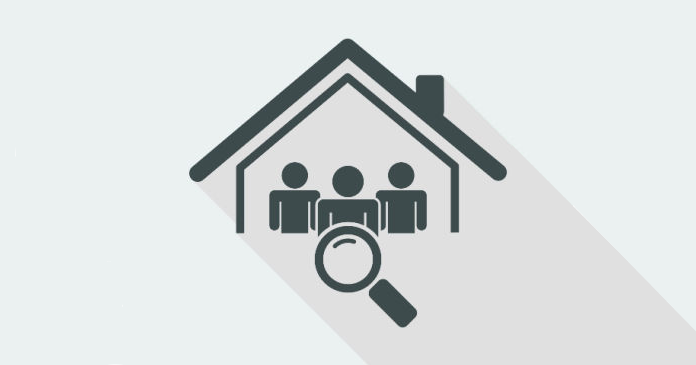The “Week 51” edition of the Census Bureau’s Pulse Survey shows that the portion of renters who are behind on their rent payments fell slightly to 13.7 percent, down from the 14.0 percent reported in the “Week 50” survey.
The Week 51 survey collected data from November 2 to November 14, 2022.
Tracking delinquencies
Renters in all phases of the Pulse survey have been asked whether they are behind on their rent. The first chart, below, shows the portion of respondents who said that they were behind at the time they were surveyed. Note that the midpoint of the “Week 51” survey period was November 8, 129 weeks after the initial Pulse Survey.
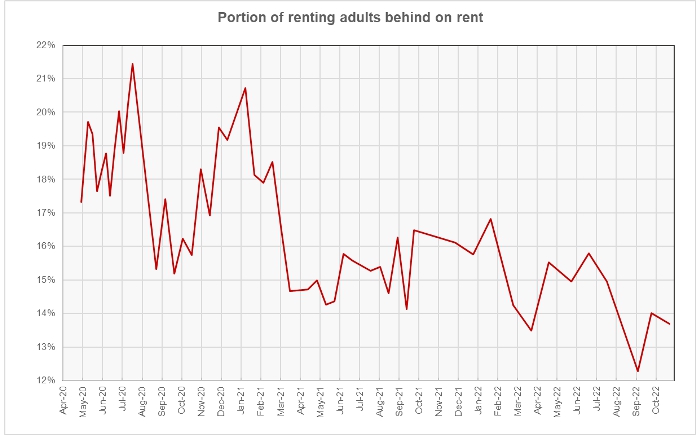
The portion of renters reporting that they were delinquent fell 0.3 percentage points between the Week 50 and Week 51 surveys despite the data collection occurring slightly earlier in the month. The differences seen between the Week 50 and Week 51 results could just be random variation caused by the relatively small number of people surveyed.
Assessing rent growth
The survey asked participants whether they had experienced rent increases over the past 12 months. The results are given in the next chart and are very similar to those reported for Week 50. A surprising portion of the respondents said that they either had not had their rent raised in the last year or that it actually went down.
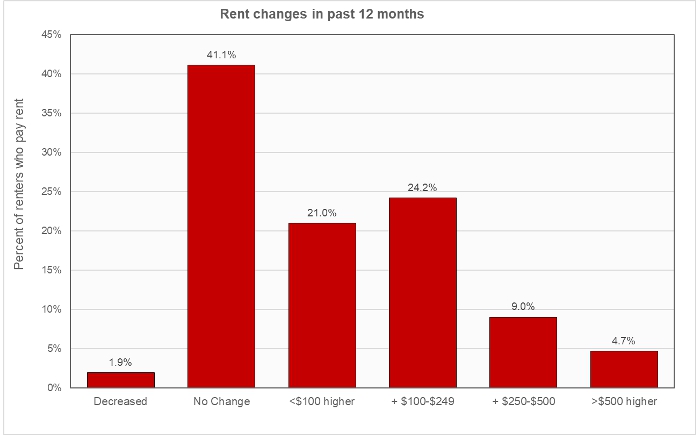
The next chart shows the distribution of rents paid by survey respondents. The data show that 41.5 percent of renters are paying less than $1,000 per month for their housing while 35.8 percent are paying more than $1,500. These figures compare to national average apartment rents of $1,371 from Apartment List and $1,727 from Yardi Matrix.
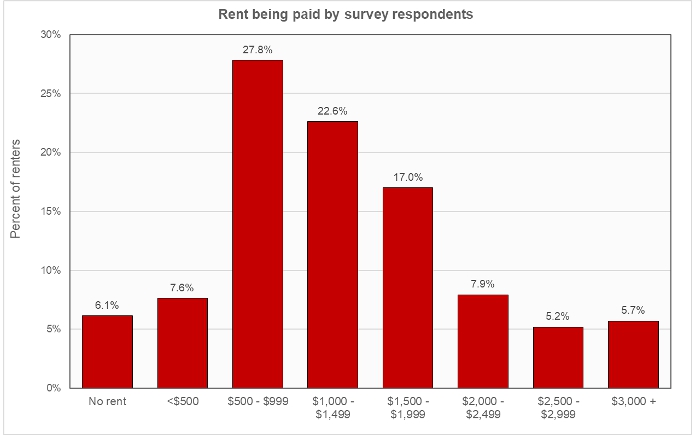
Profiling the participants
Of the respondents who reported being current on their rent, 33 percent said that they had children in the household. Of those reporting being behind on their rent, 47 percent reported having children in the household.
Of the respondents who reported being current on their rent, 12 percent said that they or a household member had experienced a loss of employment income over the prior 4 weeks. Of those reporting being behind on their rent, 32 percent reported that they or a household member had experienced a loss of employment income.
The final chart shows the sources of the funds survey respondents used to meet spending needs. Many of the differences between the people who are current on their rent and those who are behind are as one would expect: the former are more likely to rely on regular sources of income while the latter are more likely to rely on borrowing and on government assistance.
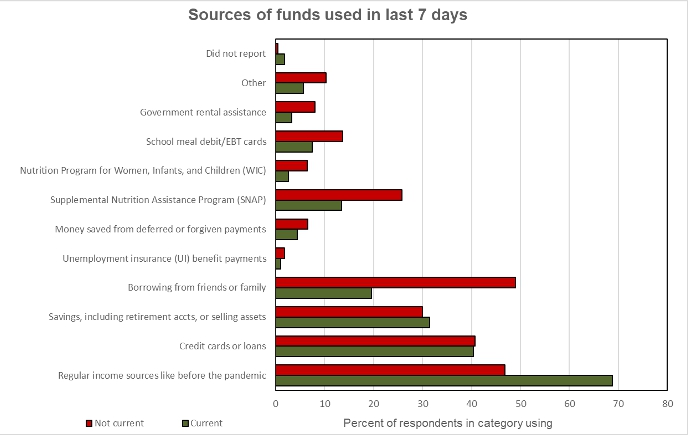
What is the Pulse Survey?
The Pulse Survey is an experimental program that the Census Bureau started shortly after economic shutdowns were imposed in response to COVID-19. It was designed to assess how the population of the country was faring under the economic stress caused by the reaction to the pandemic. The current survey, designated Week 51, is the third and final planned to be collected under what Census calls Phase 3.6 of the survey. With each new phase of the survey, Census modifies the set of questions being asked. For example, Phase 3.6 drops the detailed questions about renters’ use of Federal emergency rental assistance programs. The renter portion of the survey covers renters of both multifamily and of single-family properties.


